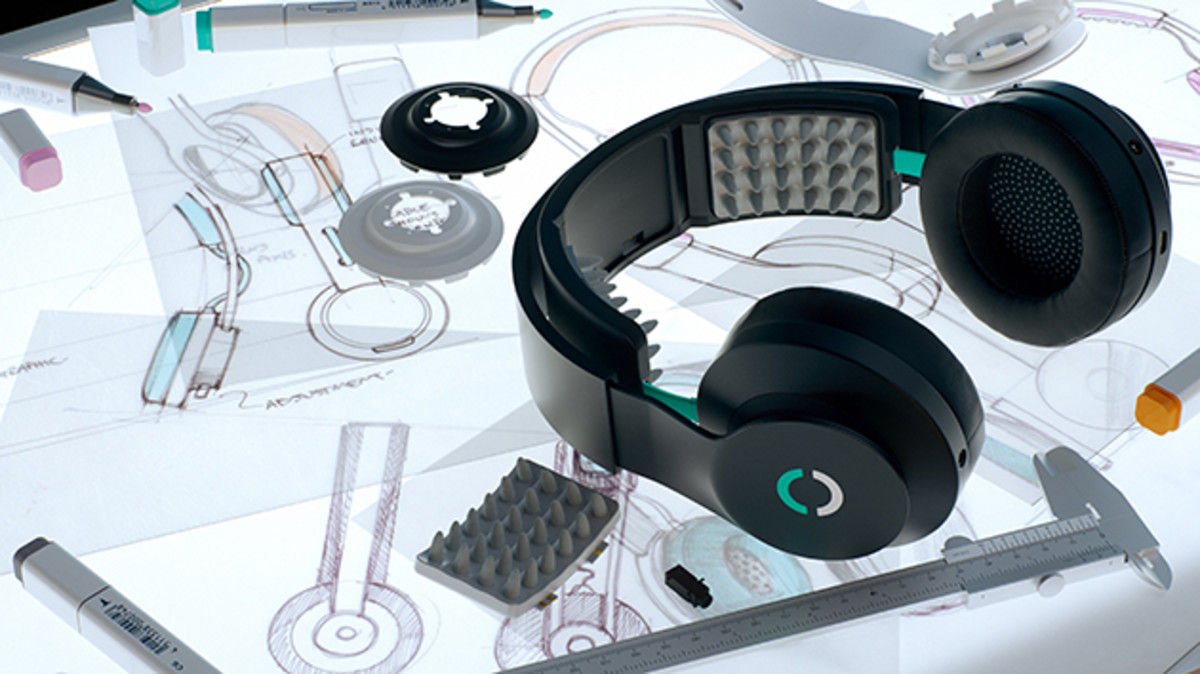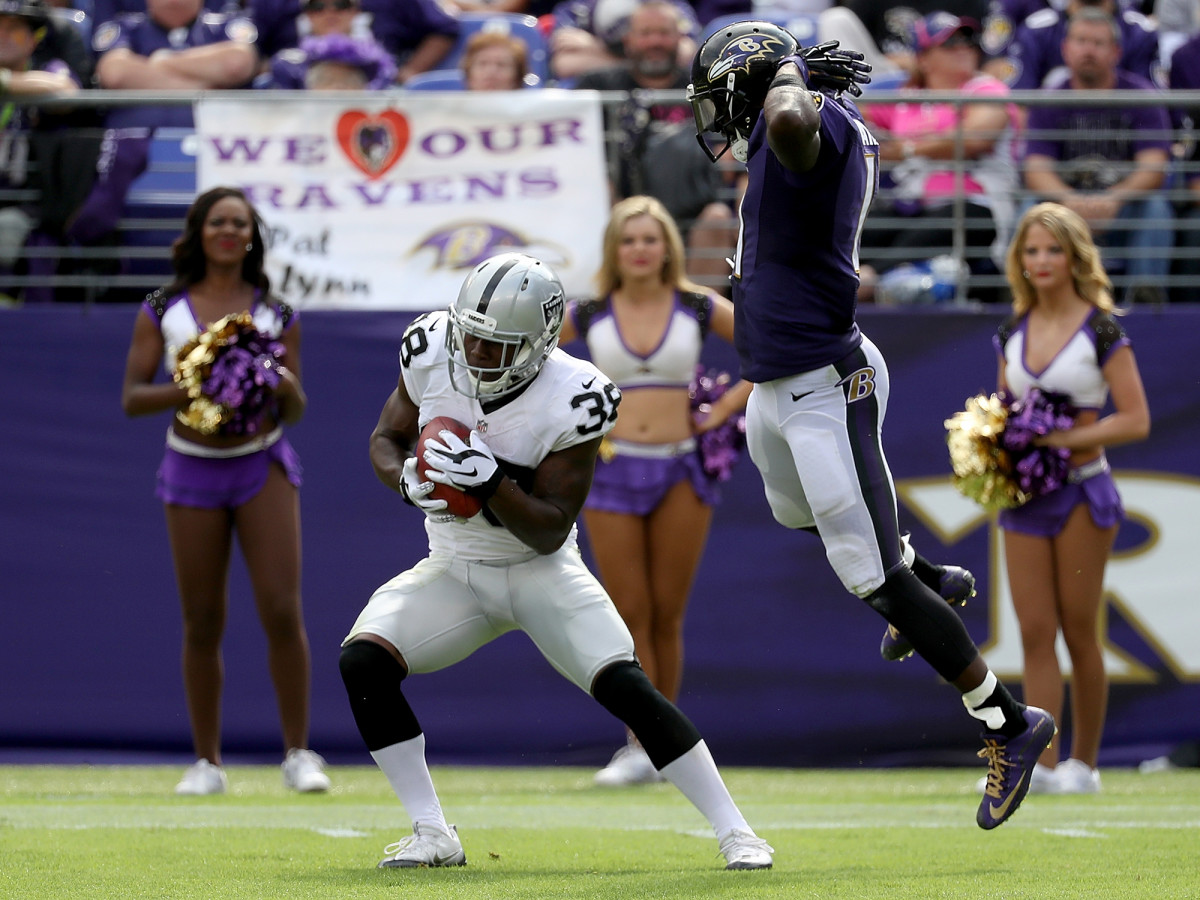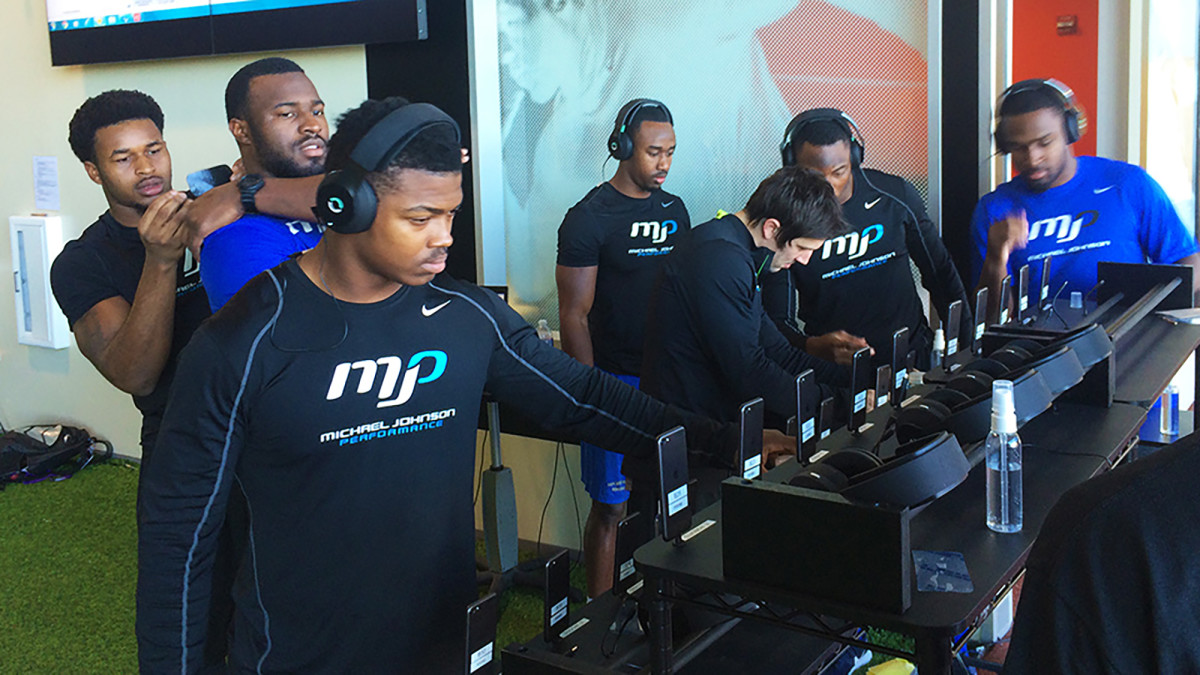Does brain training really work? We put the Halo Neuroscience sport headset to the test

Wearable fitness devices usually take the form of sensors that monitor movement or biometrics in the background, while brain training normally involves playing games that sharpen up cognitive skills. Halo Sport takes a more direct approach, applying an electrical pulse to a person’s motor cortex. Sports Illustrated has written about Halo before, but in the lead up to the device’s consumer release on Nov. 16, I was given the chance to test one out on myself in October.
As a rower, my own personal goal with Halo Sport was to shave seconds off my 5-kilometer time on an indoor rowing machine. The theory behind the headset is that the electrical pulse triggers a neuroplastic state in which neurons in the motor cortex can more easily build and strengthen neural connections to muscles. The better connections improve both control of those muscles and the ability to fully utilize all the muscle fibers in them, effectively increasing strength.

From afar, Halo Sport looks just like a pair of noise-canceling headphones, the silicone electrodes both ideally located over the brain’s motor cortex and discretely hidden by the headband. The latter design feature is a nice one for any athlete not confident enough to get stared at in a public gym environment, or reluctant to have to explain that, Yes, I’m electrifying my brain to get stronger. But when you put on or take off Halo Sport, anyone paying attention can see the rows of rubber teeth that function as electrodes inside the headband.
Raiders cornerback TJ Carrie has been using the device since this past offseason, and has had to field occasional questions from inquisitive teammates. Man, I see you spraying these things down every single day. Are you cleaning them?
Before each use, the electrodes need to be sprayed with a saline solution to ensure good electrical contact with the skin. Although after working out for a few minutes, sweat will work just as well to conduct the electrical pulses.
How America's top marathoner packed on 40 pounds of muscle after retiring
“Halo was something that I really just ventured off on,” Carrie says. “It was mainly a test process. I wanted to test it out and see what it actually did.”
The headset is used for 20 minutes before a workout, while warming up, and the neuroplastic state lasts for about an hour afterwards. When the device is on, it creates an itchy feeling in the scalp. That feeling can be increased or decreased by adjusting the amplitude setting on the headset, connected via Bluetooth to an iOS device. However, according to Daniel Chao, CEO and co-founder of Halo Neuroscience, that doesn’t change the effectiveness of Halo Sport. Chao, a Stanford-educated medical doctor and neuroscientist, does advise tuning up the amplitude so that the user can feel it, though. One of the reasons for that is to ensure the user notices if the electrical contact is broken and the device needs to be re-situated on his or her head.

Halo Sport is perhaps best used for warming up in a controlled environment. Sports in which athletes might warm up outside, such as cycling and rowing, provide the simple problem of how to wear the headset, and what to do with it once the neuropriming session is done—it can’t be worn with a bike helmet, and when out in a boat, there is really nowhere to store it safely. Added to that complication is the fact that the neuroplastic state only lasts for an hour, meaning that once warmed up, you need to start effective training soon.
“We need quality intense reps, really thoughtful quality intense reps,” Chao says. “Without that, in the context of your training, then don’t [use] it.” Key to getting the most out of Halo is having a well-structured training program, including gym sessions that are likely better suited to neuropriming during warm up and focused exercises and goals during the actual workout.
Best running and workout accessories for your new iPhone 7 and iPhone 7 plus
Perhaps the hardest part of using Halo Sport is knowing whether or not it works. The science would seem to imply it should, but running an experiment on just one person is never going to provide hard evidence. A day into my own trial I was hyper aware of any soreness or fatigue, trying to self-diagnose potential changes Halo Sport might have triggered, assuming something must be happening. My 5-kilometer indoor rowing time did drop by 10 seconds, to 17 minutes 49.1 seconds, over the course of the month I had the chance to use Halo, but my time should have dropped through training anyway. The question is how much of that time Halo Sport may have been responsible for. That problem, though, is shared by all training devices or techniques.

Carrie used Halo for six weeks ahead of this season, and is convinced that it helped him make gains. He wanted to increase his explosiveness, and by using the device for lower body workouts he gained more than six inches on his vertical jump and 100 pounds on his body squat. He still uses it every day. “As a professional athlete, you’re looking for the most professional legal edge you can get,” he says.
All in your ears: Under Armour's new wireless headphones track heart rate too
Retailing at $749, the device is at the upper end of the wearable market, but will almost certainly find a niche in a world where elite amateur athletes will drop $10,000 on a carbon road bike in order to gain an advantage over their competition.
“Our customers are people who are really avid about training,” Chao says. “A lot of our customers train five days a week, pretty consistently. A lot of our customer athletes train to the point where they will sacrifice things in their life that could make them happier.”
